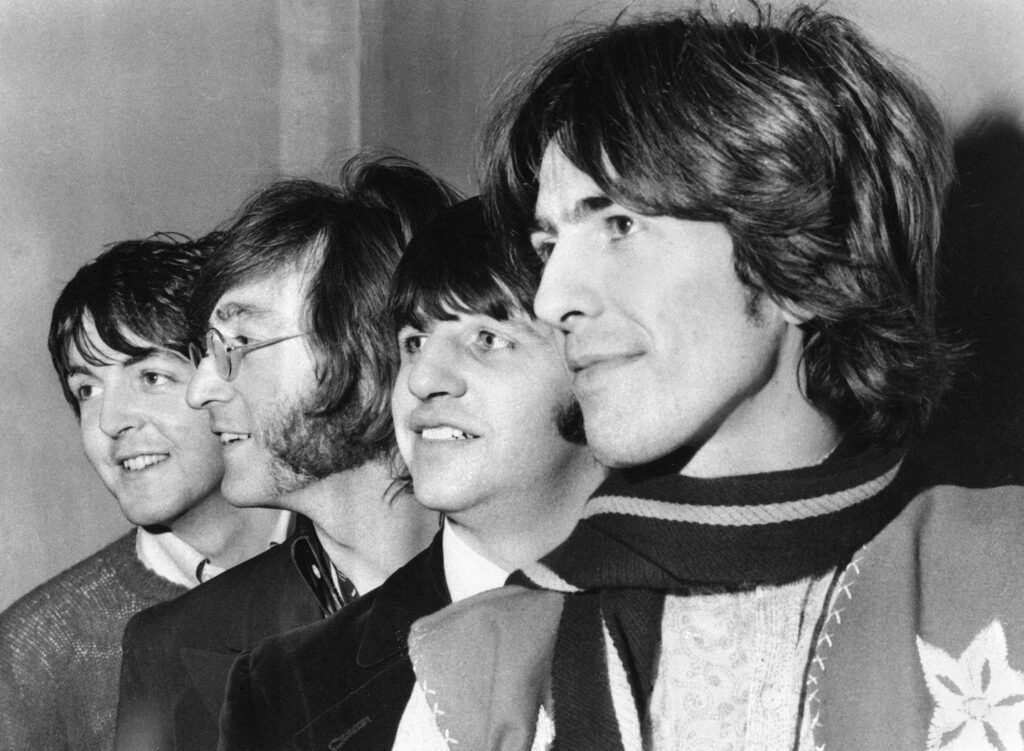The Times
In the Fall of 1963, the senior class of 1964 began the Fall semester with a feeling of optimism after The March on Washington and Martin Luther King’s “I Have A Dream” speech in August of 1963. The success of that event pressured JFK’s administration to initiate a strong federal civil rights bill in congress. What wasn’t known at the time was the impending national nightmare of November 22nd, 1963 when President John F Kennedy was shot and killed in Dallas.
As stunned students returned back to campus in January of 1964, just 5 weeks after the assassination of JFK, it felt like everything was called into question. From our relationship with our government and the military to our notions of free speech and individual freedoms life as we knew it had changed forever and split along ideological lines – old vs. young, hip vs. square, poor vs. rich and liberal vs. conservative.
A new presidency born out of tragedy, President Lyndon B. Johnson passed an unprecedented amount of legislation. Beginning with an extension of President Kennedy’s Civil Rights agenda, LBJ’s Great Society, took direct aim at eliminating poverty and social injustice when he signed the 1964 Civil Rights Act on June 2, 1964.
As US involvement in the Vietnam War escalated and a fear of a military draft, college students demanded an end to the war. On May 2, 1964, organized at Yale University, 1000 students held the first major student demonstration marching through NYC’s Times Square to the United Nations. Demonstrations were simultaneously held at colleges in San Francisco, Boston, Madison, WI and Seattle.
On February 7, 1964, Pan Am Yankee Clipper flight 101 from London’s Heathrow Airport lands at Kennedy Airport and Beatlemania hits our shores! The boys from Liverpool were greeted by 3000 screaming fans who caused a near riot. It was the first visit to the U.S. by the Beatles after scoring their first #1 hit ,“I Want To Hold Your Hand.” Two days later on February 9th, John, Paul, George and Ringo made their first appearance on the Ed Sullivan Show to an estimated 74 million people or 40% of the US population. Their 1964 chart-topping streak continued with “She Loves You” and “Can’t Buy Me Love.”
The 1964 British Invasion was in full swing with the Dave Clark Five, The Animals, The Kinks and Gerry and the Pacemakers. The year also marked a more diverse music chart than ever as Bob Dylan’s “The Times They Are A Changin’” released an album that dealt with racism, poverty and social change sharing the charts with less heady songs from The Beach Boy’s “I Get Around,” to Martha and the Vandella’s “Dancing In The Streets,” The Drifters “Under The Boardwalk,” and The Four Seasons “Rag Doll.”

Notable Events (right click on the links below to access video)
President Lyndon B. Johnson signs the Civil Rights Act – June 2nd, 1964, Washington DC
Beatles Arrive at JFK – February 7th, 1964, JFK Airport NYC
Beatles First Appearance on The Ed Sullivan Show – February 9th, 1964
CONCERTS THAT CAME TO CORTLAND 1963/1964
THE FLAMINGOS
One of the most influential vocal groups in history, The Flamingos were an American doo-wop group formed in Chicago and known for their 1959 cover of “I Only Have Eyes For You” which reached #11 on the Billboard Charts in the US
Songs 1963/1964
“I Only Have Eyes For You”
MAYNARD FERGUSON
A Canadian jazz trumpeter and bandleader, Maynard Ferguson came to prominence with Stan Kenton’s big band before forming his own band in 1957. He was also a composer, arranger, music educator and instrument designer.
Songs 1963/1964
“The Fox Hunt”
JUDY COLLINS
With a career spanning seven decades, Judy Collins is one of America’s premier singer songwriters which a distinctive soprano folk voice. Known for her social activism and themes of protest and equality, by 1964 she mainly covered songs written by other songwriters. She didn’t release original material until 1967. Her 1963 studio album of covers, “Judy Collins #3” stayed on the Billboard pop charts for 10 weeks. Students that were on campus for the 1963/1964 school year, were treated to 2 Judy Collins concerts. She performed on December 3, 1963 and returned on March 8, 1964 for a Hootenanny.
Songs 1963/1964
“Anathea”
“Bells Of Rhymney”
“Masters of War”
“Farewell”
BALTIMORE SYMPHONY ORCHESTRA – LYCEUM
Conducted by Peter Herman Adler in 1963, The Baltimore Symphony Orchestra featured 34-year-old Leon Fleisher on the piano. At the conclusion of the 1962-63 season, the BSO decided to issue a compilation LP of some of the highlights of that year’s concerts. It’s very likely that their concert on November 21, 1963 at SUNY Cortland was recorded for the album.
Songs 1963/1964
“Rhapsody on a Theme of Paganini”
RONNIE DIO AND THE PROPHETS
Ronnie James “Dio” Padavona was a hometown Cortland boy and even went to SUNY Cortland for a short time but never graduated. In a career that spanned many decades, he had one of hard rock’s most powerful and distinctive vocals. He created and fronted a series of hard rock and metal bands eventually becoming the lead singer of Richie Blackmore’s Rainbow and Black Sabbath after Ozzy Osbourne was ceremoniously fired from his own band. But before becoming a hard rock superstar, in 1964, Ronnie Dio and The Prophets performed on campus supporting their album “Dio at Dominos” recorded at Dominos Restaurant in Cortland on February 24, 1963.
Songs 1963/1964
“Mr. Misery”
“Love Potion #9”
“Love Pains”